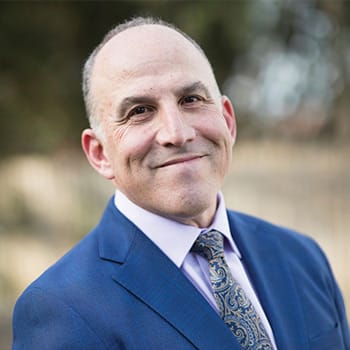Derek Frey's lack of success once almost drove him out of trading. So he went back to square one, found a strategy he could follow religiously, and now he's much more profitable.
Stopped out again! That was number 13 in a row, and I thought 13 was my lucky number! It was the last straw.
I was right to think I hated trading. I couldn’t see how I’d be able to go on in this business for one more day. I wanted to pick up my laptop and smash it into the ground. Still, I was determined to succeed and just refused to quit, so again, I decided to give it one more try. I knew there were at least a few successful traders out there, and I was determined to find or make a way to become one of them.
I started reading everything I could get my hands on about trading success written by those who’d actually achieved it. I spent four years only reading books about trading written prior to 1900. It really reinforced the "nothing new under the sun" idea.
After a while, I began to realize there were many commonalities between traders. Many things were “common knowledge,” but still seemingly hidden in plain sight.
The commonalities were not so much in the way they traded, not at all. In fact, every single one of them used a different trading system from the other. But what they did share in common was their overall view of what a market is and what is possible within it. They began to treat it as a set of probabilities rather than possibilities.
That was part of the epiphany for me. Most new traders, myself included at the time, looked at the markets with eyes of wonder and hope. But it became clear that the pros did not see the markets this way at all. They recognized the overall opportunity the market presented, but they also realized the way to get to the possible was through the probable.
One of the first things all traders hear and try to learn is, "don't trade emotionally." This is fine in theory, but the human animal is an emotionally-driven machine, and we can no more stop having emotions than we can stop breathing. Is it possible that one could completely remove emotion from trading? Yes. Is it probable? No.
Still, it remains true that trading with nothing more than pure emotion is also not likely to be profitable. So how do we deal with this? I went back to the masters and looked at how they dealt with it, and here again were a few keys hidden in plain sight.
The first was they all had some kind of mechanical or semi-mechanical system they followed as seriously, if not more so, than they did their religion. By system, I mean some sort of repeatable way of identifying select trading opportunities in whatever markets they were trading. They each had some kind of system that told them specific parameters to look for, and they only traded when those were present.
The interesting thing this did was to remove much of the emotion, because the trader was not actually making the decision, but rather the system was. So the trader’s emotions were not as fully engaged as they would be if it was based on a “hunch,” or idea. This level of detachment from the trade itself allowed them to ultimately be repetitive even in the face of the occasional losing streak.
That was the second key. They each repeated the same basic trade set-up or set-ups over and over again without fail, therefore generating the consistent results that all traders strive for. They realized that consistency was not something that traders got, but rather something they did. Consistency was not really an effect but rather a cause.
Most importantly, they kept going even in the face of a string of losses. They knew that the only way to realize the statistical advantage that lay within their system was to keep trading.
This brings us to the next key: patience. Professional traders realized that successful trading was not going to come from being a hero and betting the farm on a few trades, but rather the sum total of many thousands of trades over a much longer period of time. They realized that staying in the game was clearly the most important thing, and the only way to ensure that was by keeping leverage low and risks clearly defined and limited on every trade.
I had “discovered” the keys that were hidden in plain sight, but I still had no idea how to put them to use. I knew I needed a mechanical way to find probabilities, not possibilities. I then needed to repetitively use that system until I realized its statistical advantage, while keeping leverage to a minimum and risks clearly defined and limited.
It sounded easy enough, so I started using any and all methods I could that had some kind of verifiable edge. Things that most of you are already familiar with, like breakouts, trend following, moving average crosses, etc. Still, I struggled to stay consistent.
I suddenly realized there had been one other key I’d overlooked. It was also hiding in plain sight. Remember when I said each trader used a different method? I started thinking about this and wondered how that could be. I re-read The New Market Wizards by Jack Schwager (a fantastic book), in which at the end he has a brief “Personal Reflection” where he says the following:
“I am frequently asked whether writing this volume and the first Market Wizards helped me become a better trader. The answer is yes, but not in the way people expect when they ask the question. No trader revealed to me any great market secrets or master plan unlocking the grand design of the markets...For me, the single most important lesson provided by the interviews is that it is absolutely necessary to adopt a trading approach precisely suited to one's own personality.”
Ah hah! There it was. Even though I’d found systems that worked both mathematically and for other traders, I’d been unable to make them work for me. Now I understood why. It was simply that they did not fit my personality.
|pagebreak|Think about it this way. Are you going to repetitively do something that by its very nature goes against your personality? I don't just mean in trading, but in anything in life? Of course you’re not.
And how could one expect consistent results without acting consistently? Clearly you could not. So I finally had all the pieces of the puzzle, and I must say they were not at all the pieces I thought I was looking for when I first started on my journey. Since I now finally knew what I was looking for, I set out to find it.
Here again, I still went up a lot of blind alleys and had a number of “false starts,” but I finally found something that fit all the parameters and most importantly, fit my personality—Vibratory Harmonics and the patterns therein.
Right away, it sounds both esoteric and complicated, and frankly it is. But I found a way to take all the great science and math that had already been done by much greater minds than my own and exploit it for my own benefit. In much the same way, Jeff Gordon is not the smartest guy or engineer on his NASCAR team, but he gets to use the collective knowledge of all the team members to his benefit simply by hopping in the car that they built.
When I was finally introduced to Harmonic Patterns, I quickly realized that I was being handed the equivalent to a championship-winning car, much like Jeff Gordon was. But just like him, having a car that can win is not enough. It matters how you drive it. And while these harmonic patterns were anything but a secret, it was the rules that I’d devised around them that gave me both my edge and my ability to be consistent just like Jeff Gordon.
These Harmonic Patterns have been proven to offer greater than a 70% edge when used properly. The best part was there were only a few rules and they were clear and easy to follow along with (at least for my personality).
So what I am going to do is lay out the exact rule set that I started with. I have since made some minor changes, but these original rules served me well and still do. Think of these as a starting point, not an end.
- Identify one of the four major Harmonic Patterns (Gartley, Bat, Butterfly, or Crab).
- Once a pattern is found, measure the risk-reward ratio to determine if it is worth pursuing further. Rewards should be at least 1.5 times the risk, and preferably 2 times or greater.
- If the Risk reward is acceptable,then take the trade. If not, return to step 1.
- Repeat these steps for no less than 1,000 trades.
So once I finally started following the above rules, my trading shifted from a wild emotional rollercoaster ride to an almost emotionless systematic execution of my strategy.
I knew all along that while trading is not easy, it is, in fact, simple. Einstein said it best when he said, “Everything should be made as simple as possible, but no simpler.” Trading success comes down to finding a verifiable “edge” that you can be consistent with, and then systematically applying it over time until you realize the fruits of the statistical edge that lies within.
Realizing this simple truth that was hidden in plain sight from me for many years has turned me from being just an average trader to a trader who recently won a trading contest in November 2011 with a 199% return. I hope that by describing my journey that it both helps and inspires other traders to never give up!
Derek Frey is an independent trader and can be found at ElementalTrader.com.









